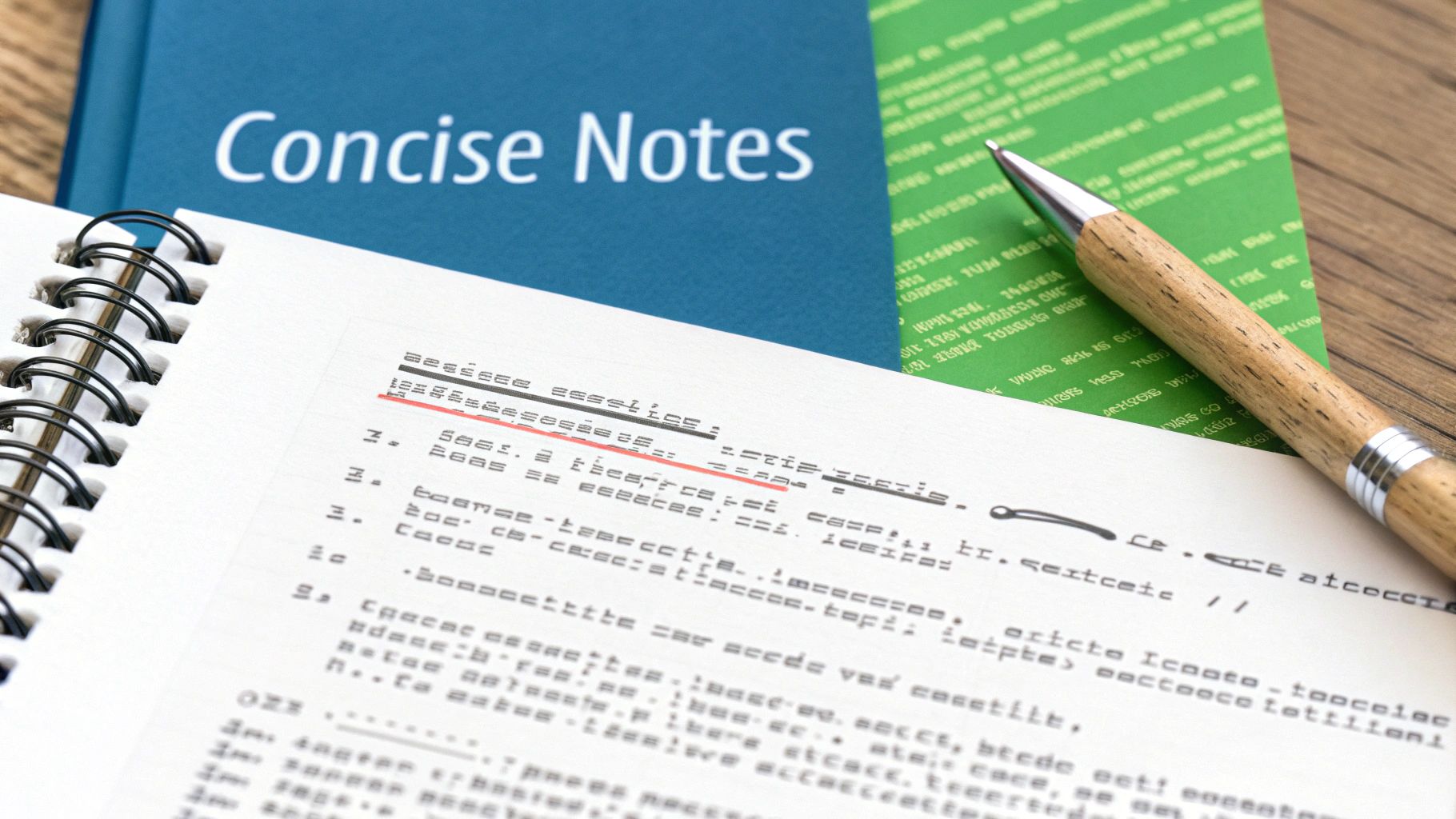Transform your code documentation with proven commenting strategies that drive team efficiency and code maintainability. Learn expert approaches to writing comments that future developers will genuinely value.
Image description
Code comments act as a guide through complex software projects, helping developers understand both the code itself and the thinking behind it. Good documentation proves especially valuable when multiple developers collaborate or when revisiting code after long breaks. Think about tracking down a critical bug in code you wrote six months ago - clear comments can help you solve the problem in minutes instead of hours.
The best documentation explains not just what code does, but why specific choices were made during development. This becomes crucial when working with complex algorithms or unique business requirements embedded in the code. By capturing these insights, teams can share knowledge more effectively and help new members get up to speed quickly while avoiding costly mistakes.
Comments play a vital role in making code easier to read and maintain. When explaining a complex algorithm, step-by-step comments help clarify each calculation’s purpose and expected results. This helps both current team members and future developers work with the code more efficiently. Studies show that well-documented code can significantly reduce bug fix times by making the debugging process more straightforward. Learn more about documentation’s impact on software quality here.
Great code comments share these essential qualities:
You can start improving your code documentation today with these straightforward techniques:

After exploring documentation strategies, let’s focus on what makes code comments truly valuable - explaining the “why.” Good comments go beyond describing what the code does to reveal the thinking and intent behind it. This deeper level of documentation helps other developers maintain and modify code with confidence.
Great code comments explain the reasoning behind implementation choices. Rather than just describing a function’s behavior, share why you structured it in a particular way. For example, note any performance considerations, edge cases you’re handling, or technical constraints that shaped your approach. This context helps future developers avoid breaking critical functionality when making changes.
When documenting architecture decisions, explain what led you to choose specific patterns or frameworks. Did you pick a microservices approach for scalability? Are you using a particular library because it handles edge cases better? These insights help maintain consistency as the system grows and evolves.
Business rules and requirements often drive technical implementation choices. By connecting the dots between code and business needs in your comments, you create a shared understanding between technical and non-technical team members. Clear documentation of business logic helps prevent costly misunderstandings.
For complex algorithms, explain your thinking process and rationale. A great example is this comment from a statistical computing project: target += normal_lpdf(lambda_mu | 7.5, 0.25); // laboratory stock preparation methods insure at least 7 and no more than 8 log10 number of bacteria per 10ul. This comment provides crucial context about real-world constraints that influenced the code. For more examples, check out this discussion of effective code comments.
Regular review and updates keep comments relevant as code evolves. Set aside time during code reviews to evaluate if comments still accurately reflect the code’s purpose and constraints. Watch for outdated explanations that could mislead other developers. For more guidance on maintaining high-quality documentation, see How to master documenting your code. Clear, current comments build trust and promote smoother collaboration across your development team.

After exploring why code documentation matters, let’s look at how teams can measure if their documentation actually helps developers. Simply counting comments isn’t enough - we need to understand their real impact on day-to-day development work. This helps teams fine-tune their documentation approach for better results.
While the comment-to-code ratio gives a basic metric, it doesn’t show the full picture. A high ratio might mean you have lots of comments, but that doesn’t guarantee they’re helpful. For example, a file with 25% comments (100 lines of comments per 400 lines of code) could be filled with repetitive or unnecessary text rather than clear explanations. Learn more about these ratios from Software.com’s engineering metrics guide. We need better ways to check if comments actually help developers do their work.
One good way to measure comment usefulness is to track which sections developers refer to most during debugging or feature work. If developers keep asking questions about certain parts of the code, those areas likely need better documentation. Code reviews also offer valuable insight - reviewers can point out where comments help or fall short, showing where to improve.
Good documentation needs regular updates. As code changes, the comments explaining it must change too. Out-of-date comments can actually hurt more than having no comments at all, since they can send developers down the wrong path. That’s why teams should make documentation updates a normal part of their development process.
Bigger teams often struggle to keep documentation consistent. Clear guidelines about comment style, content, and frequency help everyone stay on the same page. Tools like DocuWriter.ai can help by automatically generating some documentation and checking that it follows the team’s standards. This lets developers focus on writing the important explanatory comments that really matter. When teams stick to good practices and use helpful tools, their code stays clear and maintainable even as projects grow larger, leading to smoother teamwork and faster development.

Good code documentation requires ongoing effort and attention. Development teams face several key challenges in keeping their documentation useful and up-to-date. Let’s explore practical ways to handle these common issues and make documentation work for your team long-term.
Comment drift happens when documentation falls behind code changes. For example, if you modify a function’s parameters but forget to update the related comments, those comments become misleading rather than helpful. This disconnect between code and documentation can seriously impact developer productivity.
To avoid this issue, make documentation updates part of your regular development workflow. Review comments alongside code changes during pull requests. Tools like DocuWriter.ai can help by automating parts of the documentation process to keep everything in sync.
Older codebases often come with layers of existing documentation. Some of it provides important context, while other parts may be outdated or no longer relevant. The challenge lies in figuring out what to keep, update, or remove.
A practical approach is to focus first on documenting the most important code sections - especially areas that see frequent changes or bug reports. You can then gradually improve documentation for other parts as time allows. This helps you make steady progress without getting overwhelmed.
Good comments explain the “why” behind code decisions. As your codebase grows and changes, those explanations need to stay current. Surface-level comments like i = i + 1; // Add one to i don’t add value - instead, explain the purpose behind the code.
For more guidance on writing effective comments, check out these best practices from Stack Overflow. The key is regular review and updates to keep documentation meaningful and accurate.
Code reviews provide the perfect opportunity to catch documentation issues early. Make documentation checks a standard part of your review process. Ask reviewers to evaluate not just if the code works, but if the comments clearly explain what it does and why. This helps maintain consistent documentation quality across your codebase.
Good documentation habits need support from the whole team. Set clear expectations, provide training, and recognize team members who consistently write good documentation. When documentation becomes a natural part of your development process rather than an afterthought, code quality and team productivity improve. Tools like DocuWriter.ai can help by making documentation easier and showing its concrete benefits.
When it comes to code documentation, the real power lies in its strategic use. Good documentation serves as much more than just comments - it becomes a key asset for sharing knowledge, speeding up new developer onboarding, and keeping technical debt in check. This shifts documentation from a tedious task to a valuable investment in your codebase’s future.
Smart documentation means knowing where explanations matter most. Rather than commenting every line, focus on explaining the complex and non-obvious parts of your code. This includes tricky algorithms, unusual logic patterns, major architectural decisions, and the reasoning behind specific implementation choices. For instance, when documenting why you picked a particular sorting method, explain the performance considerations that guided your choice.
Good placement of comments only matters if they actually help readers understand the code. Write your explanations in simple, direct language that any team member can follow. Skip the complex jargon and focus on explaining why certain decisions were made rather than restating what the code does. The goal is to make your documentation genuinely useful for the next person who needs to work with the code.
As your code changes, your documentation needs to keep up. Wrong or outdated comments can be more harmful than having no comments at all, since they can send developers down the wrong path. Make documentation updates part of your regular development process, including reviewing comments during code reviews. Tools like DocuWriter.ai can help automate some of this work to maintain consistency. Add context when fixing bugs by explaining both the problem and solution - this creates a helpful reference for future debugging. Remember that quality beats quantity when it comes to comments.
Large systems need a well-planned documentation approach. Try combining high-level architecture diagrams with detailed code comments to give developers both the big picture and the specifics they need. DocuWriter.ai can assist by creating UML diagrams that show how different parts of your system connect. This helps new team members understand the overall structure before diving into specific code sections.
Poor or missing documentation adds to technical debt by making future code changes riskier and more time-consuming. Good documentation helps control this debt by providing the context needed to modify code safely and efficiently. When developers understand why certain decisions were made, they’re less likely to introduce breaking changes or make incorrect assumptions. Think of documentation as insurance against costly mistakes and knowledge loss.
When done right, documentation creates a valuable knowledge repository for your entire team. By recording design decisions, implementation details, and lessons learned, you create a resource that helps both current and future team members succeed. This shared understanding makes collaboration easier, helps new developers get up to speed faster, and encourages ongoing improvements to your codebase.
Creating excellent documentation habits within a development team takes time and dedication. Success comes from changing how teams think about documentation, setting clear expectations, and making it a natural part of daily work. Here’s how teams can build stronger documentation practices from the ground up.
Just as developers follow coding standards, documentation needs consistent guidelines too. A style guide for documentation helps everyone write clear, useful comments that others can easily understand. The guide should spell out what good documentation looks like - from basic formatting rules to explaining the reasoning behind technical decisions. Think of it as a shared language that keeps everyone on the same page.
Code reviews need to look at documentation quality just as closely as code quality. When reviewing pull requests, team members should check if comments are clear, accurate and complete. This approach helps catch documentation drift - where comments become outdated as code changes. Making documentation review a key part of the process ensures it stays current and valuable.
Documentation should feel worthwhile, not burdensome. Show the team how good docs save debugging time, help new members get up to speed faster, and make maintenance easier down the road. Celebrate team members who consistently write helpful documentation. Try adding fun elements like badges or rewards for great documentation to build positive habits. This creates an environment where everyone pitches in and benefits from well-documented code.
For documentation to stick, it needs to be simple and consistent. Having standard formats and tools makes the process smoother for everyone. Tools like DocuWriter.ai can handle routine documentation tasks automatically, letting developers focus on explaining the important context and logic behind their code. For example, auto-generating basic function documentation frees up time to explain the “why” behind key decisions.
The easier documentation fits into existing work, the more likely teams are to maintain it well. Look for ways to integrate documentation directly into your IDE and version control workflow. Tools like DocuWriter.ai can analyze code to suggest documentation improvements or create initial drafts. These tools also help enforce team standards automatically. This turns documentation from an extra task into a natural part of writing code.
Track concrete metrics to see if your documentation efforts are working. Keep an eye on how often docs get updated, how many documentation issues come up in reviews, and what the team says about documentation usefulness. This data shows what’s working and what needs improvement. By putting good processes in place, using the right tools, and building team habits around documentation, you can make it a valuable part of your development process that truly helps your projects succeed.
Ready to improve your team’s documentation? Learn how DocuWriter.ai can help streamline your documentation workflow.